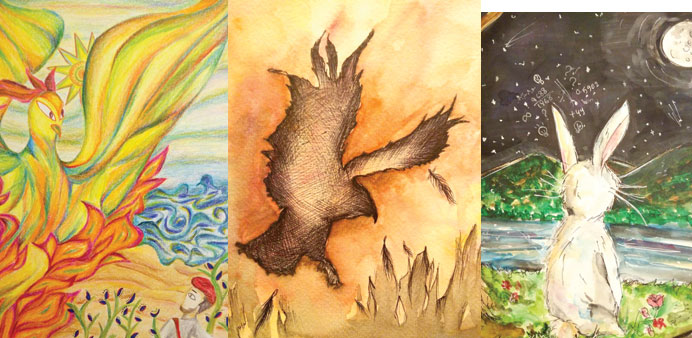By Anand Holla
As part of Museum of Islamic Art’s (MIA) fascinating new exhibition ‘Marvellous Creatures: Animal Fables in Islamic Art’, young talents were asked to showcase their creative prowess in an art competition. The results are rather impressive.
The exhibition, which will go on till July 11, is said to transport you back to an era where real and mythical animals make interesting appearances in the legends, tales, and fables of the Islamic world. The competition finalists’ artworks show the power of imagination of a new generation of illustrators of today’s Qatar, who could effectively translate their understanding of the fables from the Islamic world.
“In their own words, each person expresses the meaning they have drawn from fables of the past, and their own creative responses. They follow in the footsteps of those who have gone before – artists through the centuries who have illuminated stories for pleasure and learning, using their own artistic and literary heritage to communicate and better understand the world, and their place in it,” said the MIA, in a note on the competition.
“MIA congratulates the 10 winners for their artistic skill, dedication, and passion. We would also like to thank all the other competition participants and the MIA team for their support of the project,” the MIA added.
Here are the names of the winners: Amna Mohammad Abdul Rahman al-Ne’ma, Muneera al-Qahtani, Noura Adnan Mousa al-Saa’i, Shamil Ashraf, Gabriel Bullen, Hadia Hassan, Aaliya Jaleel, Se Hee Jang, Nimrah Kabiruddin, and Tham Chin Soon.
The marvellous creatures of the exhibition that are divided into the natural quadrants of earth, air, fire, and water, have introduced time-honoured stories such as Shahnameh, the epic poem that tells the story of the heroes and rulers of ancient Persia; Kalila wa Dimna, the popular animal fables laced with moral lessons that were written nearly 2,500 years ago; and 1001 Nights, Arabic folk tales from the Islamic Golden Age, and conveyed important messages and lessons on life.
“Animals feature in the artistic production of diverse cultures from far-flung times and places, which are nonetheless connected by their shared celebration of traditional fables and the messages, knowledge, and lessons found in these stories,” says MIA’s note to the exhibition.

